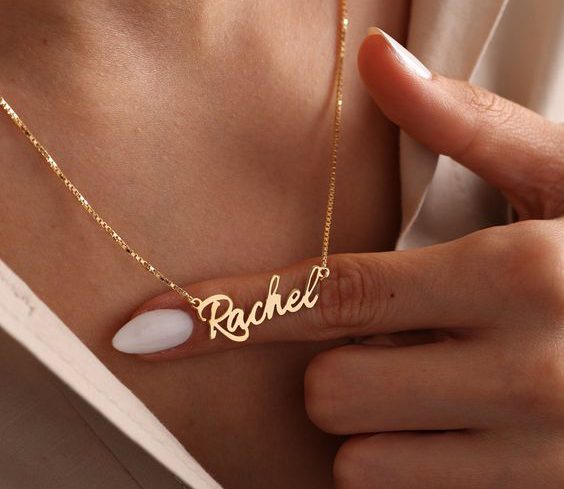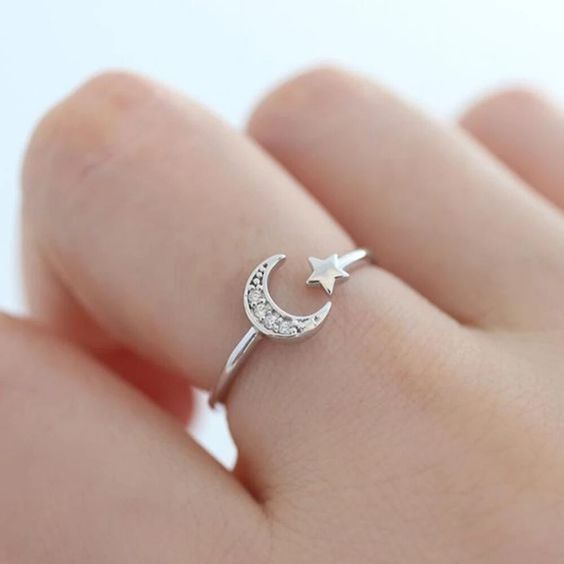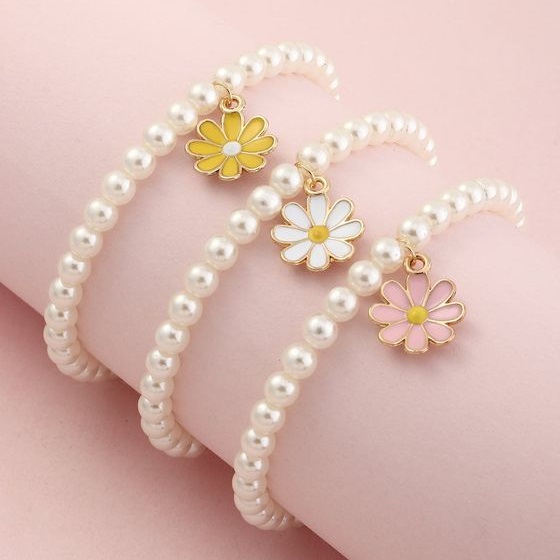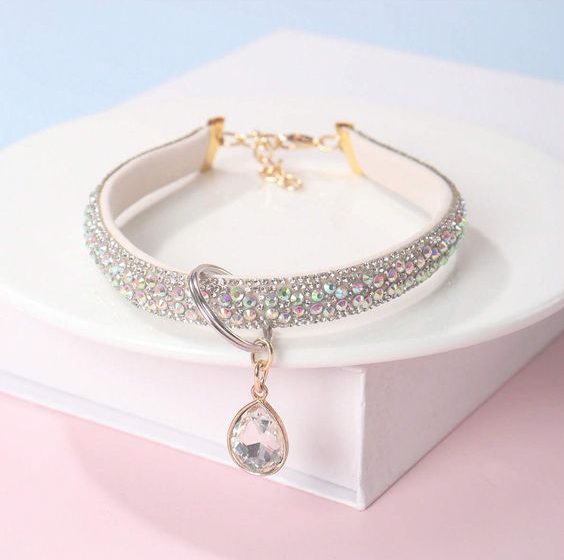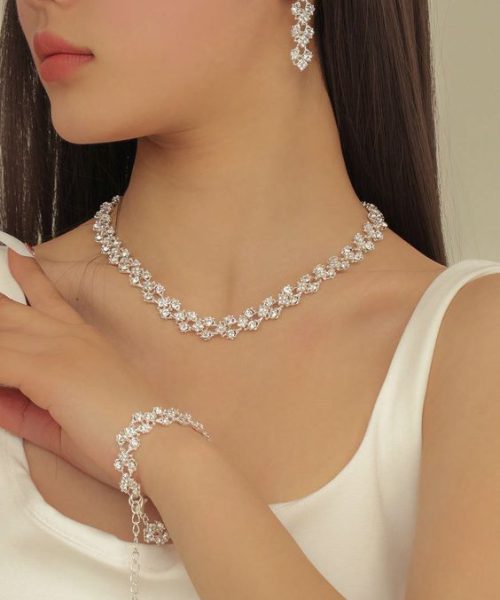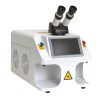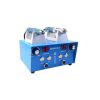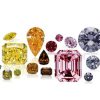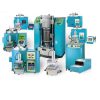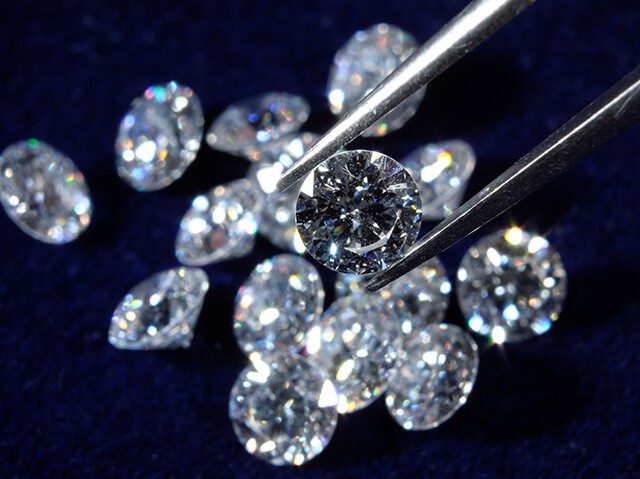A HPHT diamond (High Pressure High Temperature) is a Lab Grown Diamond, a real diamond made of crystallized carbon. It is chemically, physically and optically identical to mine diamonds. At Green World Diamonds you get certificates from renowned gemmological laboratories like IGI, GCAL, GIA etc.
Page table of contents
HPHT DIAMONDS
HPHT is an acronym for high pressure, high temperature, a technique used to create a synthetic diamond. The HPHT process allows HPHT engineers to create beautiful, authentic diamonds within a controlled environment and is rising in popularity among fine jewelry purchasers
Unlike diamond alternatives and diamond simulants available on the market such as the Nexus Diamond™ alternative, moissanite, cubic zirconia and white sapphire, an HPHT diamond is a real diamond that shares the same chemical and physical properties as its natural diamond counterpart.
Since HPHT diamonds share the same properties as mined diamonds, they also share the same durability. And, just as no two mined diamonds are alike, the same is true for lab diamonds. Just like a traditional diamond, HPHT diamonds are graded according to the 4Cs of diamond quality – cut, color, carat and clarity. HPHT diamonds are certified by gemologists and consumers will receive a diamond grading report that verifies their stone’s authenticity and value upon purchase. So when comparing the two types of diamonds side by side, origin and cost are the real deciding factors.
In HPHT growth, a carbon source such as graphite or diamond powder is placed in the reactor chamber along with other ingredients to facilitate diamond growth atop a diamond seed. A molten metal catalyst (usually containing a mixture of Fe, Ni, Co, or other elements) allows growth to proceed at a lower temperature. This also reduces the technological complexity and some of the expense required to grow diamond under HPHT conditions. HPHT growth occurs at pressures of 5–6 GPa (roughly equivalent to the pressure exerted by a commercial jet airplane if balanced on the tip of a person’s finger) and at temperatures of 1300–1600°C. As with CVD diamond growth, HPHT growth proceeds by creating a temperature gradient in which the carbon source is at a slightly higher temperature than the diamond growth seed. This causes the carbon atoms to diffuse through the molten flux toward the slightly colder section of the chamber to form a synthetic diamond crystal on the seed. Most early gem-quality HPHT synthetics were fancy color, since color-causing impurities, such as nitrogen (yellow) or boron (blue), were often prevalent within the growth system. Recent progress in growth technology has allowed for better control of impurity contents, resulting in the creation of colorless crystals
The HPHT Process
1. The HPHT diamond formation process begins with a small diamond seed that is placed into pure carbon.
2. The diamond seed is exposed to intense pressure and heat.
3. The carbon melts and a diamond begins to form around the seed.
4 The substance is carefully cooled to form a diamond.
5. The rough diamond is then ready to be cut, polished, and set into jewelry like a naturally grown rough diamond.
Leopard Jewelry in Canada provides HPHT Diamonds (synthetic diamonds) for you. Contact us in Canada, Toronto for treatment.
diagnosis natural diamonds from HPHT
It’s difficult to distinguish natural diamonds from HPHT stones, so some consumers inadvertently purchase enhanced diamonds thinking they are real. The Gemological Institute of America (GIA) wanted to remedy this situation to help prospective buyers truly know whether they were looking at a natural or enhanced stone. A team, led by the GIA’s director of research, Dr. Wuyi Wang, put diamonds through a barrage of tests to indicate whether they were natural or not. They discovered that in order to differentiate the HPHT from the natural diamonds, advanced spectroscopic techniques needed to be used. An instrument called the DiamondView is used to detect synthetic diamonds by looking for unique spectroscopic telltale features like a lack of natural graining in the stone.
HPHT DIAMONDS AND THE 4CS
lab grown diamonds are ranked by the 4Cs of diamond quality, and in some cases, applied material engineers can enhance the desired qualities of an HPHT diamond. One desired quality that HPHT diamonds are famous for obtaining is color. In fact, the HPHT process is so good at achieving preferred color grades (read D to H color grades) that it can be used to permanently alter the color of both lab grown and natural diamonds.
Leopard Jewelry in Canada provides HPHT Diamonds (synthetic diamonds) for you. Contact us in Canada, Toronto for treatment.
HPHT DIAMONDS AND FINE JEWELRY
As we’ve well established by now, synthetic diamonds are diamonds. That being said, these stones can be used in jewelry in all of the same ways as a natural diamond be that a glamorous engagement ring, a sparkling pair of diamond studs or a flashy bracelet for everyday wear.
Because HPHT diamonds are so durable, they make for a great option when selecting the center stone for your future engagement ring or a set of accent diamonds for your wedding band. With proper care, a synthetic diamond should not crack or chip with day to day wear so you can rock an HPHT diamond with the confidence that your forever adornment is ready for whatever adventures come your way.
the benefits of HPHT diamonds
Whether you are buying a diamond formed from by the HPHT process, or need one to undergo an HPHT color enhancement, there are plenty of benefits for you to enjoy:
Affordable:
HPHT diamonds are less expensive than their natural counterparts. Naturally formed diamonds go through a long supply chain that stretches across miners, distributors, cutters, polishers, and jewelers. On the other hand, HPHT formed diamonds, pass through fewer hands and thus incur fewer expenses.
Genuine diamonds:
The HPHT formed diamonds are just as gorgeous, strong, and versatile as naturally grown diamonds. Moreover, they are chemically and optically identical to natural diamonds.
Permanent results:
The HPHT color enhancement process is permanent, so you never need to worry about your diamond losing its remarkable color grade. Less upkeep, and more time to admire its sparkly features!
Environmentally friendly:
Lab grown diamonds typically place less strain on the environment. They do not require mining in mineral deposits.
Leopard Jewelry in Canada provides HPHT Diamonds (synthetic diamonds) for you. Contact us in Canada, Toronto for treatment.
How to tell if a diamond has been HPHT treated
Since the average person cannot tell a natural diamond apart from an HPHT diamond, you should always reference a diamond’s official certification.
Diamond certification labs, such as the IGI, employ expert gemologists who will analyze a diamond’s characteristics, such as the 4C’s, and produce a certificate that details the diamond’s information. A certificate from a reputable lab will indicate if a diamond was made through the HPHT process or received any HPHT treatment.
Many diamonds are sold with certifications so customers can know exactly what kind of diamond they are buying. Diamond certificates prevent people from becoming swindled by unscrupulous jewelers who execrate grades and inflate prices, allowing people to shop with confidence.
Concerns
With many consumers wanting to purchase the “biggest and best” diamond, the demand for HPHT diamonds grew. These enhanced stones allow consumers to get a larger stone with better color for less than what they would pay for a natural diamond of the same specifications—but at what cost? Purchasing HPHT diamonds is not recommended for several reasons. These enhanced stones can show hints of color that is visible from the side of the stone upon close inspection. They also tend to lose some of their original weight and clarity during the process. Even more concerning is that HPHT diamonds tend to be magnetic and some can even be picked up by magnetic force!
HPHT can only be used on high-clarity diamonds (VVS1, VVS2, VS1, VS2, and flawless) because the extreme pressure and temperature can cause diamonds with inclusions or fractures to explode during the process.
CONCLUSION
Today the HPHT growth process is used to produce colorless or fancy-color synthetic diamonds with high clarity. In recent years, extremes in carat weight—both melee (again, see box B) and larger sizes greater than four carats—have attracted the most attention and made the greatest strides. As growth processes continue to improve, clarity will likely improve, color zoning within fancy-color diamonds will become less noticeable, and the resulting synthetics will likely be visually less distinguishable from polished natural diamonds. Nevertheless, these HPHT synthetics display ultraviolet fluorescence reactions and inclusion features that are unusual in natural diamonds. The results described in this article illustrate how these samples all exhibit spectroscopy features that are quite different from those found in comparable natural diamonds.
Leopard Jewelry in Canada provides HPHT Diamonds (synthetic diamonds) for you. Contact us in Canada, Toronto for treatment.






























